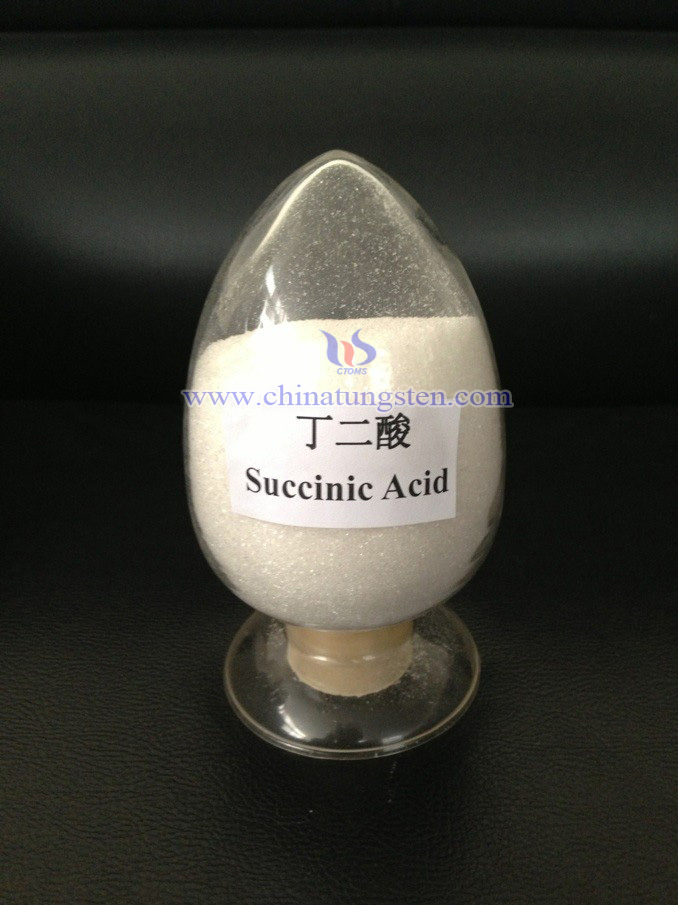Succinic Acid and Sodium Tungstate on Ni-W-P Alloy Coating Influence
- Details
- Category: Tungsten Information
- Published on Thursday, 14 January 2016 17:32
Succinic acid is colorless crystal and decomposes at 235℃. Under reduced pressure distillation it can be sublimated. It’s soluble in water and slightly soluble in ethanol, ether and acetone. The important use of succinic acid is preparing five-membered heterocyclic compounds. It also can be used as a seasoning, preservatives, surfactants, and preventing the corrosion and pitting corrosion of metals in electroplating industry.
 Ni-P-W ternary alloy coating has excellent mechanical properties, wear resistance, corrosion resistance, and thermal stability. It can use in specific device instead of stainless steel. In addition, it is also a kind of excellent electrical contact material used to make thin film resistor. But traditional Ni-W-P coating has some defects. This paper reports using compound complexing agent to stabilize coating and adjusting the content of succinic acid and sodium tungstate to optimize the deposition rate of electroless plating.
Ni-P-W ternary alloy coating has excellent mechanical properties, wear resistance, corrosion resistance, and thermal stability. It can use in specific device instead of stainless steel. In addition, it is also a kind of excellent electrical contact material used to make thin film resistor. But traditional Ni-W-P coating has some defects. This paper reports using compound complexing agent to stabilize coating and adjusting the content of succinic acid and sodium tungstate to optimize the deposition rate of electroless plating.
Experimental methods: Low carbon steel as base material, make substrate pretreatment before plating. Prepare seven kinds of sample, nickel sulfate as the main salt, sodium hypophosphite as reducer, sodium citrate, sodium acetate and EDTA as compound complexing agent. Add succinic acid and sodium tungstate. Use distilled water to dissolve various reagents respectively. Add water to blend after mixing. Adjust pH value to 4.6 ~ 4.8, and heat in constant temperature heating tank. Hang substrate after the pretreatment in the plating solution for two hours.
The influence of Succinic acid and sodium tungstate on Ni-W-P alloy coating:
1. The impact on the coating deposition rate:
Succinic acid has an obvious promotion on the plating speed. But it doesn’t mean succinic acid content is bigger, the plating speed is faster. With the increase of the content of sodium tungstate, the coating deposition rate decreases. This may be because with the increase of concentration of sodium tungstate, phosphorus decreases.
2. The impact on the coating surface morphology:
With the increase of succinic acid content in the plating solution, cellular particle size decreases in plating. Increasing the content of sodium tungstate can improve the utilization rate of sodium hypophosphite so as to raise pinhole density on the surface of the coating.
| Sodium Tungstate Supplier: Chinatungsten sodium-tungstate.com | Tel.: 86 592 5129696; Fax: 86 592 5129797;Email:sales@chinatungsten.com |
| Tungsten News & Prices, 3G Version: http://3g.chinatungsten.com | Molybdenum News & Molybdenum Price: http://news.molybdenum.com.cn |